Setting up WordPress redirects is one of the core tasks every WordPress site owner has to deal with. They allow you to point your users to the right website and are essential element in the WordPress SEO game. The good news is, thanks to convenient plugins, setting up a WordPress redirect is both quick and easy.
All you need is the right plugin and a few minutes of your time to set everything up. No coding or backend website access is necessary. But which plugin to choose?
The choice will depend on the type of redirect you want to set - and how robust you want the plugin itself to be. In this quick guide & review article, we look at the best WordPress redirect plugins for 2022.
But before we jump right into them, let’s first look at the different types of WordPress redirects.
Table of Contents:
1. What Is a WordPress Redirect?
2. Best WordPress Redirect Plugins
3. All-in-One WordPress Redirect Plugins
Redirection (Free)
Safe Site Redirect Manager (Free)
4. WordPress SEO Plugins with a WordPress Redirect Feature
All In One SEO (Premium)
Yoast SEO (Premium)
Rank Math SEO (Free)
5. Single-Purpose WordPress Redirect Plugins
Easy HTTPS Redirection (SSL)
Simple Website Redirect
404 Solution
All 404 Redirect to Homepage & Broken images Redirection
301 Redirects - Easy Redirect Manager
404 to 301 – Redirect, Log and Notify 404 Errors
6. Start Redirecting Critical Links Now
1. What Is a WordPress Redirect?
A WordPress redirect is a way of telling your visitor’s browser that the content they want to visit has moved. There are various types of website redirects - the most popular ones include:
- 301 redirect (permanent)
The most popular redirect type and one that’s critical for your SEO. It tells the visitor's browser (and Google) that the content has been moved permanently.
Because it’s a permanent redirect, it passes most of the link juice and page authority. As a WordPress SEO owner or manager, the majority of redirects that you’ll be dealing with are 301 redirects.
They are also an essential tool in your SEO arsenal While they're not a ranking factor on their own, they're critical for handling 404s or moving a site.
- 302 redirect (temporary)
This redirect tells the visitor that the content they’re looking for exists but has been moved temporarily. It’s ideal for testing but doesn’t pass link juice and can lead to an SEO penalty.
- 303 redirect (temporary)
This redirect is similar to 302. But, it offers more security and is used whenever that security is needed. A 303 redirect prevents pages such as checkout from getting resubmitted. This helps protect the data that’s temporarily on them.
It also ensures that users cannot submit the same information more than once. This, in turn, prevents people from signing up or purchasing the same product many times.
While it’s a critical redirect, especially in e-commerce, it’s unlikely you’ll ever have to set it up manually.
- 307 redirect (temporary)
307 is similar to 302 in that it serves the content from its temporary location. However, it's usually a better choice (and a preferred one) in terms of SEO.
You can usually use a 307 if you’re going to move the content back to its original location. Because it doesn’t pass any link juice, it allows you to keep your ranking intact. Of course, if you move the content back to where it should be.
- 308 redirect (permanent)
Just like 301, it’s a permanent redirect. The main difference is that a 308 can only use the POST method. Because of that, it’s not as popular as 301. But, because it's a permanent redirect, Google treats it the same as a 301 one.
On top of the above, there are also specific server-side redirects - the two most popular ones include:
- 404 Not Found
One of the most common redirects. It’s used to handle any broken links or missing pages. Because 404s are an important SEO factor, it’s crucial to handle them correctly. Plus, they have a massive impact on user experience (nobody likes random 404 pages!).
- HTTP to HTTPS
A critical redirect that forces browsers to show the HTTPS version of your website. Because it’s a site-wide redirect, any problems with an HTTPS redirect may lead to various issues. The most common include SEO penalty, lack of visitor trust, or problems with payment methods.
Of course, these are not the only redirects - but they’re the most common ones. That’s why we’ll focus exclusively on plugins designed to help you set up and monitor one of the redirects listed.
2. Best WordPress Redirect Plugins
Now, it’s time to look at the plugins themselves. We’ve separated them into three different categories:
- WordPress redirect plugins that cover all core types of redirects.
- Popular WordPress SEO plugins that offer WordPress redirects.
- Redirect plugins focused on a particular type of redirect.
3. All-in-One Redirect Plugins
In this WordPress redirect plugins category, we put plugins that allow users to create various redirects. This means users are not restricted to just one type and can create all kinds of redirects - be it a 301 or 404.
Redirection (Free)

Redirection is often considered the #1 WordPress redirect plugin - and for a good reason. The plugin doesn’t just allow you to create redirects. It’s a complete WordPress redirect management machine - and it’s free!.
The plugin allows you to set all types of redirects, monitor the traffic, or log 404s. You can conveniently group redirects or even import and export them. If it sounds overwhelming - don't worry! Creating a redirect takes just a few clicks of a button.

If you want a robust plugin that’s easy to use and frequently updated - you can’t go wrong with redirection. Getting started is easy even if it’s the first WordPress redirect plugin you’re dealing with. Thanks to its popularity, it’s easy to find solutions to any questions or issues you come across.
Safe Site Redirect Manager (Free)

The second redirect plugin in our list, Safe Redirect Manager is simple yet powerful. It comes with very few settings but does its core job very well.
You can use it to create all the critical types of redirects: 301, 302, 303, and 307. It also enables you to handle 403, 404, and 410 status codes. All that using a single redirect settings menu:
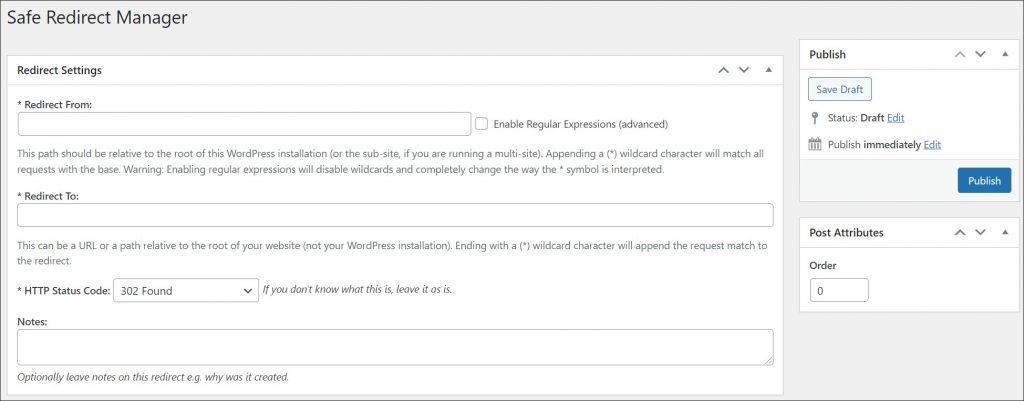
All in all, it may not have that many options, especially when compared with Redirection. Still, it’s an excellent choice for all users who value simplicity and want to get the job done.
4. SEO Plugins with a Redirect Feature
In this category, we list SEO plugins that come with a WordPress redirect feature.
While it’s just a feature, most redirects are created for SEO purposes anyway. So, why not create them right in your SEO plugin?
All In One SEO (Premium)

All In One SEO is a robust WordPress SEO plugin with a built-in redirect feature. Often named “the original WordPress SEO plugin”, it’s been around for 15 years. During that time it rose to become one of the top WordPress SEO plugins.
When it comes to WordPress redirects, you can create common SEO redirects like 301, 302, 303, 304, 308, or a pass-through. On top of that, you can also create redirects to handle both client and server error responses. Including such gems as a 418 I’m a teapot response.
The only drawback is that redirects are available only to premium AIOSEO users. But if you’re one, the plugin allows you to keep all your SEO tasks under one roof.
Yoast SEO (Premium)

The second SEO plugin in our list, Yoast SEO is a year younger than its older brother - but just as robust. It’s also the most popular SEO plugin, boasting over 5 million installations.
On top of its great SEO features, it covers all the core redirects most WordPress websites might need. These include 301, 302, 307, and several more.
Plus, just like AIOSEO it allows you to handle certain server responses. Which, while not technically redirects, might come in handy. This includes the not-so-common 451 (content unavailable for legal reasons) status.
Rank Math SEO (Free)

The third SEO plugin offering WordPress redirects is not as popular or as old as the two other But, that doesn’t mean Rank Math SEO is not just as powerful.
Dubbed “The Swiss Army Knife of WordPress SEO”, it offers everything you may need to take care of your website’s SEO. Of course, this includes WordPress redirects. The plugin allows you to create, manage, categorize or even backup your site’s redirects.
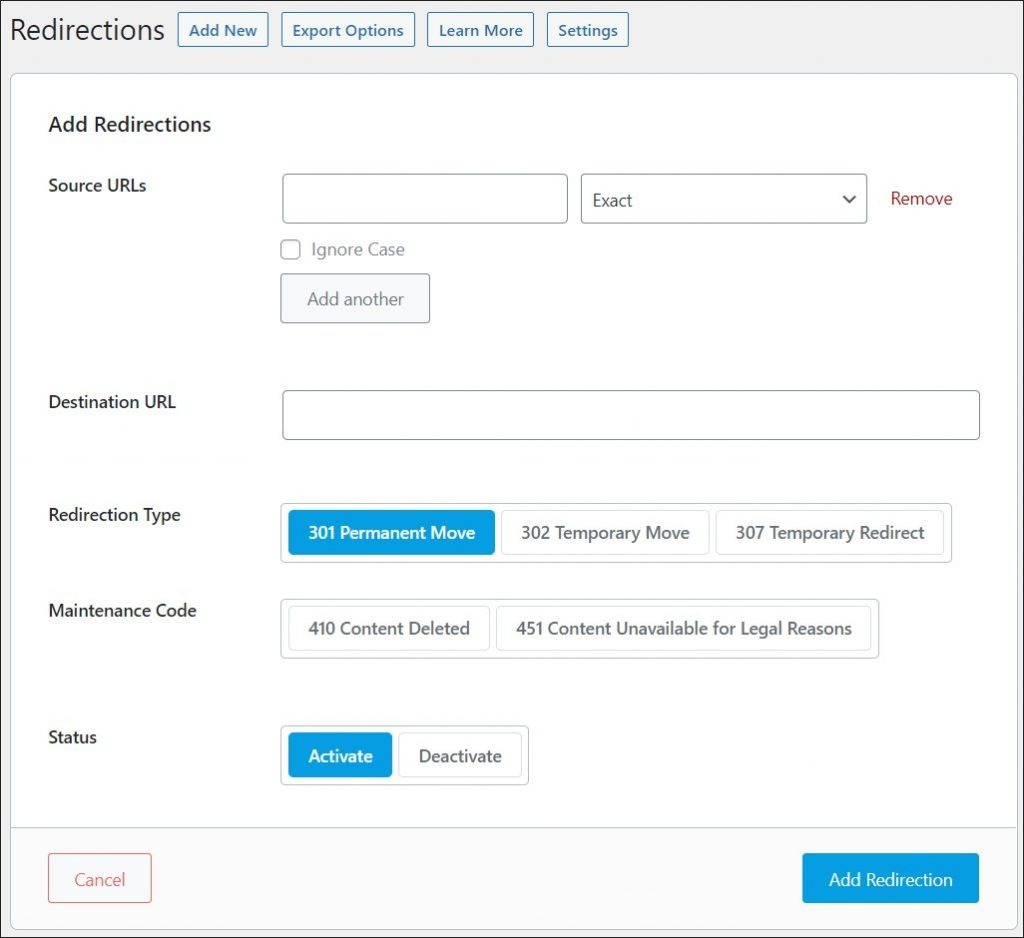
There are five status codes that you can handle in the free version: 301, 302, 307, 410, and 451. You can also set the site's behavior for handling 404 errors. For example, you can pick a default 404 page or you set your site to redirect to the homepage. All in a few clicks of a mouse button.
5. Single-Purpose WordPress Redirect Plugins
The third category are the so-called “single-purpose” plugins. Unlike plugins in the first category, they don’t cover the majority of redirects or status codes.
However, that doesn’t mean they all offer just one setting. Some of them allow you to handle different types of redirects. They just don’t cover the majority of the most common ones.
Easy HTTPS Redirection (SSL)

Compared with the other entries on our list, Easy HTTPs Redirection is a different kind of beast. Still, it’s worth mentioning it, should you be looking for a way to handle redirects after installing an SSL. Why?
Unlike the other plugins listed, it doesn’t focus on handling 301s or 404s. Rather, it’s designed to help you redirect your entire website from http:// to https://.
That’s why, ONLY use this plugin if you have already installed an SSL certificate on your website. Not only that - you want to be 100% sure it’s working correctly. Otherwise, it won’t work or might even cause issues with website accessibility.
If you’re still in the process and need a plugin to handle your SSL, check out WP Blazer’s WordPress SSL Management feature.
Simple Website Redirect

Simple Website Redirect does exactly what its name suggests. The plugin allows you to create two types of redirects - permanent and temporary.
The plugin also offers two configuration options for your WordPress redirects. You can exclude redirects by certain paths or query parameters. This prevents the redirect from firing in a set scenario.
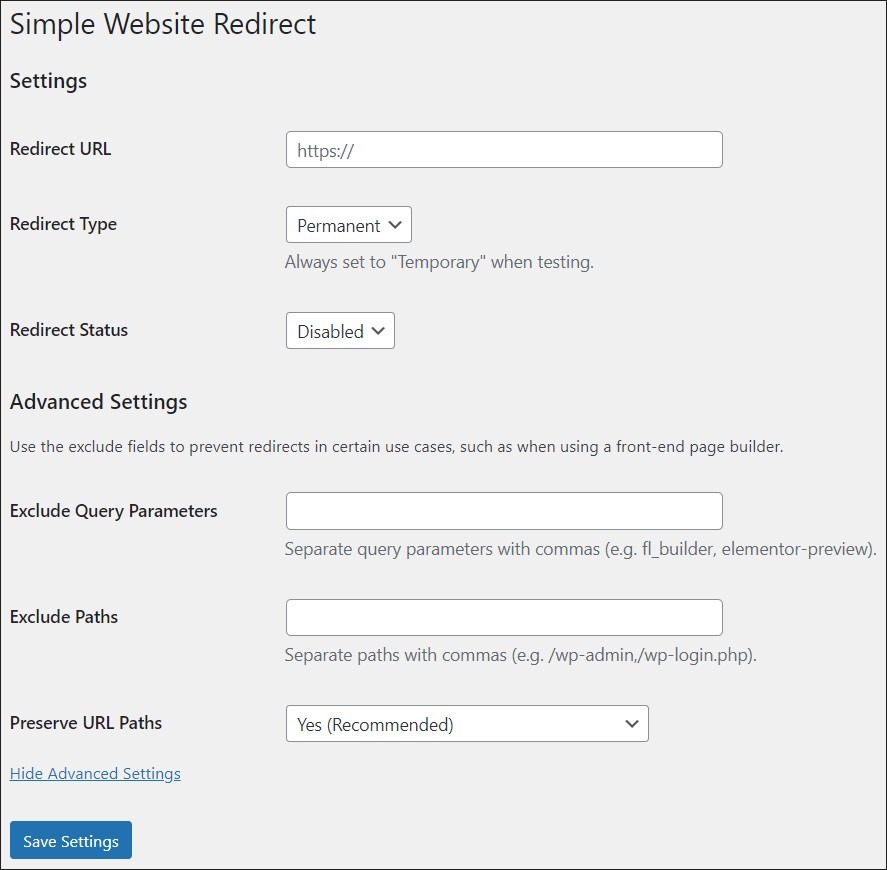
Of course, this may be not enough to handle all the redirects and status codes you need. Especially if you’re managing a big WordPress site.
But, if all you need is to do some testing or have just a few permanent redirects to set - the plugin is guaranteed to do its job.
404 Solution

404 solution sounds like a simple plugin to redirect 404 errors - but don’t let its name mislead you. The plugin is probably the most robust 404 WordPress redirect plugin out there. On top of creating and monitoring 404 redirects, the plugin allows you to:
- Show suggestions on a custom 404 page.
- Automatically remove unused redirects (both manual and automated).
- Create manual redirects.
- Create redirects based on regular expressions and include query data.
- Create automated redirects based on the URL the user was trying to visit.
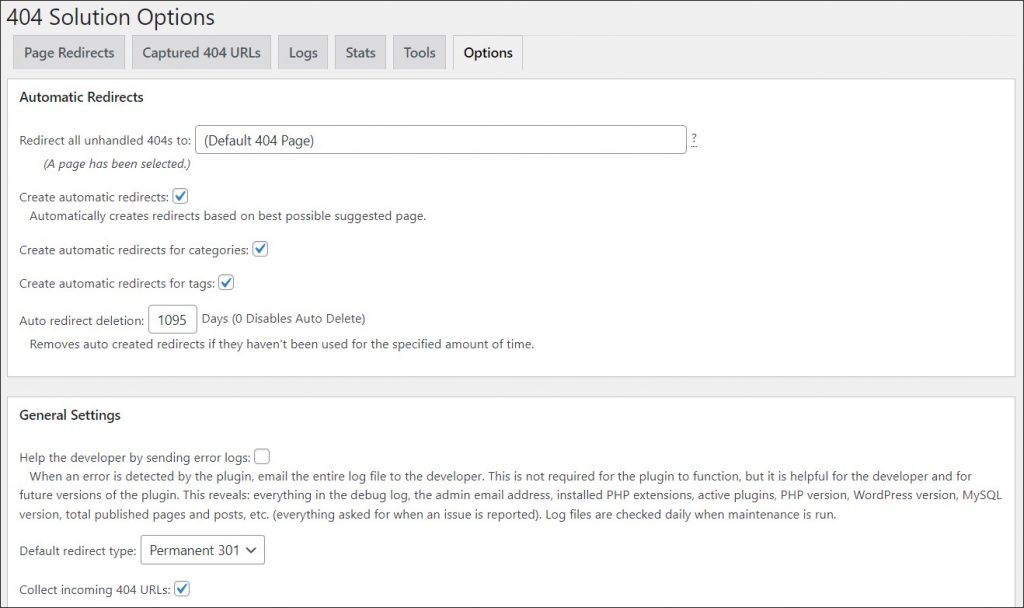
The plugin even allows you to create manual redirects for the URLs of your choice. The only drawback is you can only choose a 301 or a 302 redirect.
Additionally, the plugin offers a wealth of other minor settings. These include whitelisting, logging, and very detailed redirect statistics. Plus, it’s fully WooCommerce compatible.
All 404 Redirect to Homepage & Broken images Redirection

The next plugin in our list focuses on one type of redirects. The plugin helps you find and redirect all 404 errors (both page and image). Then, it can create 301 redirects to a page of your choice or redirect all 404s to the homepage.
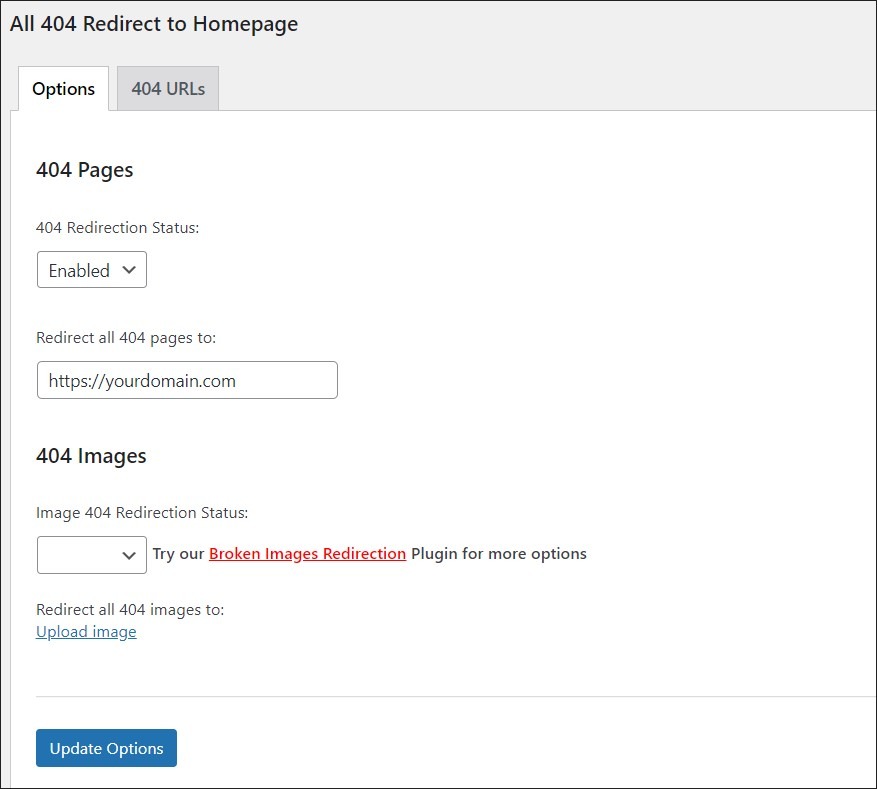
However, the only thing you can redirect image 404 errors to is another image. If you need custom image redirection, you need another WordPress redirect plugin (by the same developer).
All in all, 404 Redirect to Homepage & Broken Images Redirection is a simple plugin. But the neat thing about it is that it does the job of creating redirects for you. Plus, it displays the 404 URLs it finds in a convenient dashboard, giving you the opportunity to fix them.
301 Redirects - Easy Redirect Manager

301 Redirects is a simple plugin designed to help you handle the most popular types of redirects. It boasts a user-friendly interface and great redirects speed. The plugin comes in both free and paid versions.
The paid version offers more advanced URL matching rules, auto-fix typos or URL cloaking. It also gives you a more detailed 404 and redirects statistics.

However, the free version is more than enough if all you need are 301, 302, or 307 redirects. The only huge drawback is that it doesn’t support wildcard redirects). But, it gives you basic 404 monitoring - which allows you to find and fix any critical problematic links.
404 to 301 – Redirect, Log and Notify 404 Errors
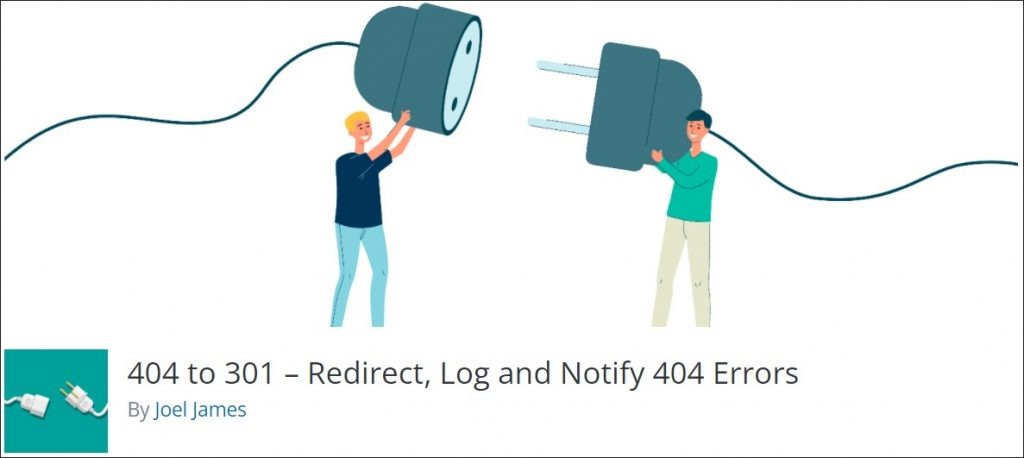
404 to 301 is another convenient plugin created to help you monitor and redirect 404 errors.
Even though the name of the plugin suggests 404 to 301 redirects only, you can also create 302s and 307s. But, just like with the other 404-focused plugins listed, you don’t get to specify the redirects.
Rather, you select the redirect type and choose where to redirect the user should they stumble upon a 404.
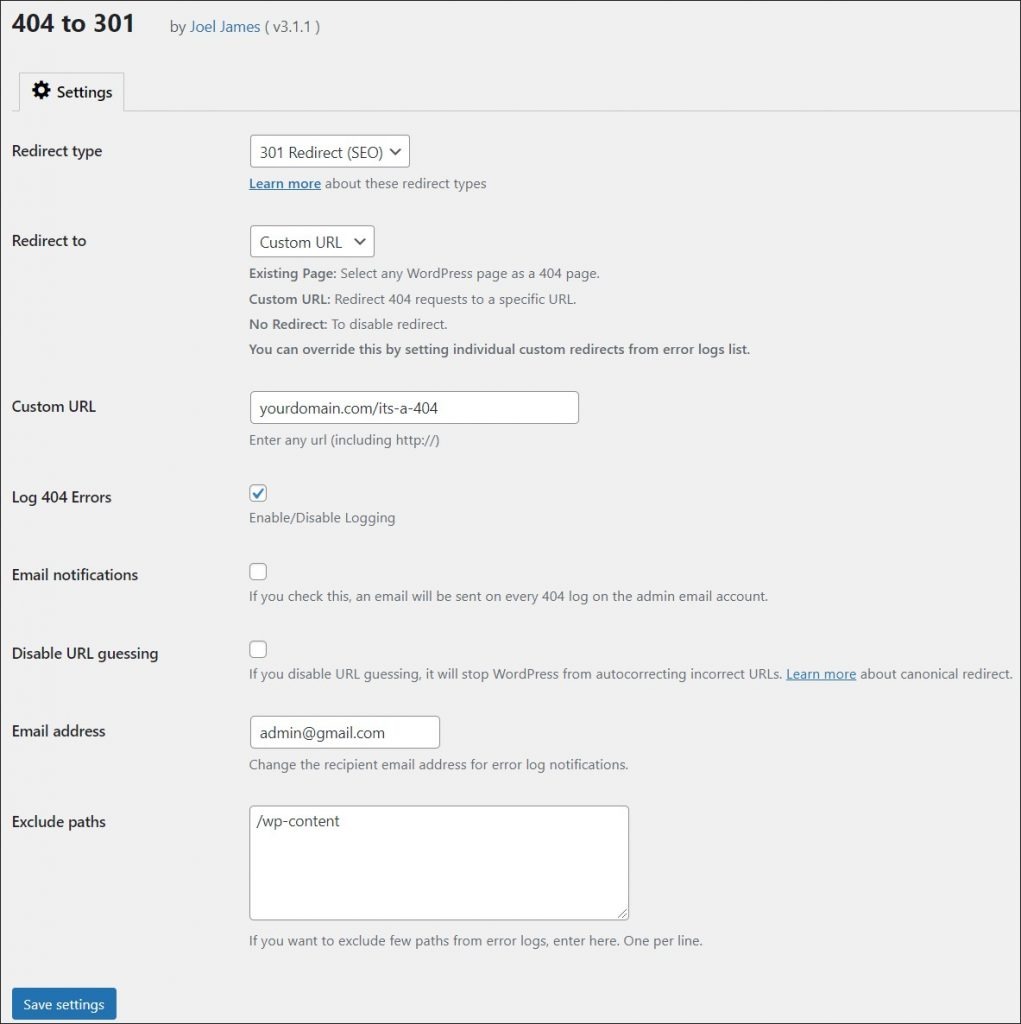
The plugin also offers a convenient log manager addon for scheduling email logs. The addon is perfect especially for those who manage big websites. A schedule protects you from getting flooded with emails each time the plugin finds an error.
6. Start Redirecting Critical Links Now
Whether you need to deal with 404s or set up plenty of 301s manually, there’s a WordPress redirect plugin for it. Whichever plugin you choose, make sure that you pick the right status code for your redirect. And, of course, don’t forget about ensuring air tight HTTP to HTTPS redirection.
Speaking of which - if you need a secure way to handle your SSL, check out WP Blazer’s WordPress SSL Management. Sign up today for a 14-day trial and add a free Cloudflare certificate to your websites in a matter of minutes!
